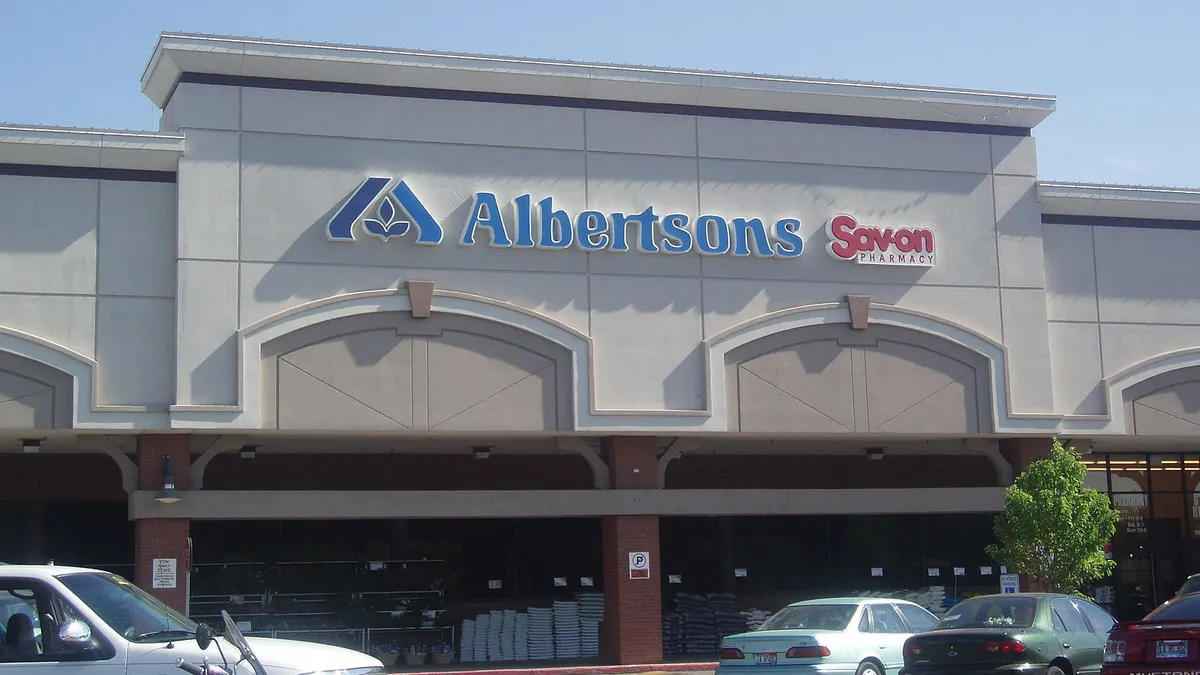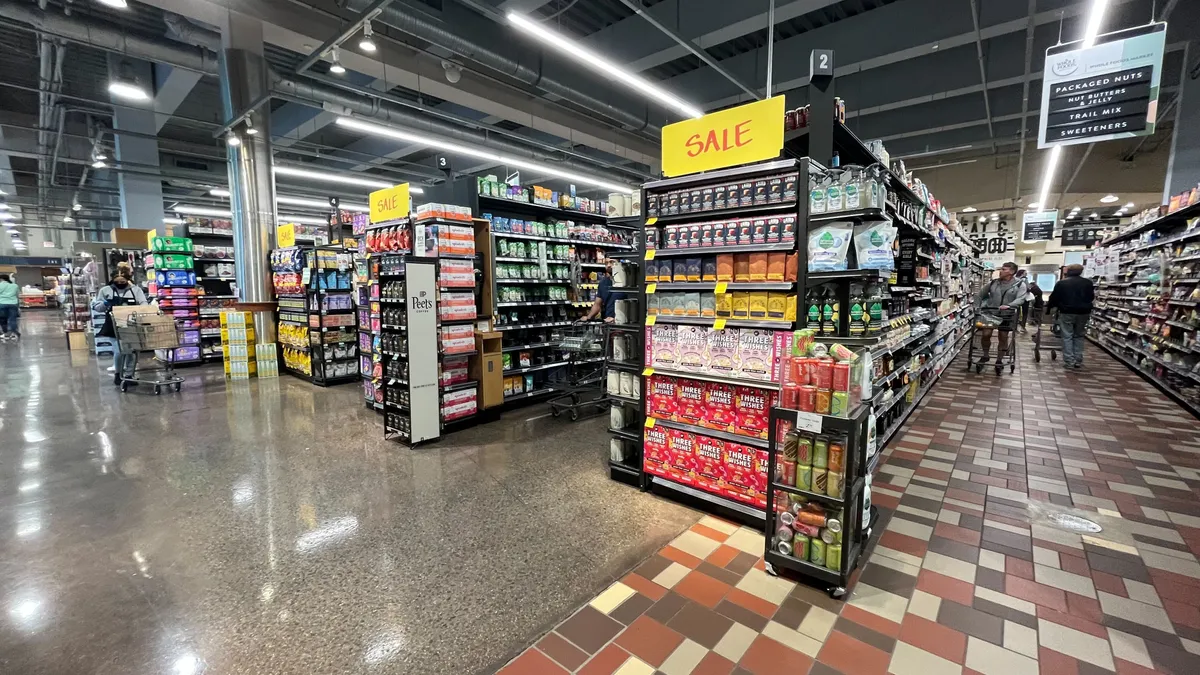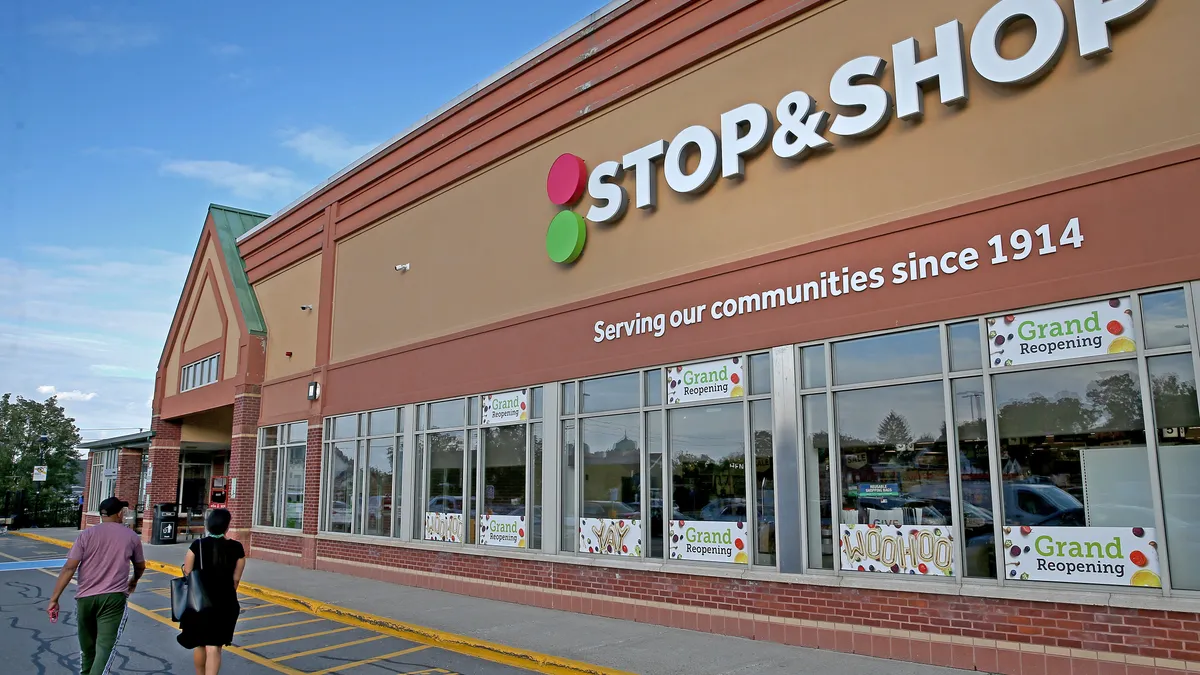Dive Brief:
- A combined Albertsons-Rite Aid could see significant cost savings and sales benefits, but the two companies must execute their integration seamlessly or face accelerating losses due to competitive pressures and a high debt load, Moody’s analysts wrote in a new report. The firm estimates the combined company will have a debt-to-EBITDA ratio of 6 for the first year following the closing of the transaction.
- The merger offers significant opportunities to cross-sell groceries and nonfood products, Moody’s notes. Albertsons private label products will likely perform well at Rite Aid locations, while Rite Aid’s health and beauty care offerings stand to lift sales at supermarkets such as Safeway and Jewel-Osco. Albertsons wants to increase its share of private label sales to 30% — up from 23% in its stores currently, and 19% in Rite Aid stores.
- Analysts also see benefits for Rite Aid’s pharmacy business in an aging population and an expected uptick in generic drug approvals. “As Americans age, this will drive increasing use of prescription drugs, including the rising use of higher margin generic drugs which will benefit profitability in the longer term,” the firm notes.
Dive Insight:
A combined Albertsons-Rite Aid has the potential to be a major success, but getting there won't be easy.
As Moody’s analysts note, the integration has to go well or the companies’ combined weaknesses — including Albertsons’ significant debt load, Rite Aid’s weak brand, and overall pricing pressure — could accelerate declines. This puts significant pressure on Jim Donald, who was named president and COO of Albertsons Cos. last month.
A former chief executive with Starbucks who also has held senior management positions at Safeway, Walmart, Pathmark and served on Rite Aid’s board for several years, Donald brings significant experience to the role. But he will face a significant challenge merging a pharmacy company with a supermarket chain that itself oversees 19 brands and a variety of new investments, including Plated meal kits.
The benefits of the deal also will be slow to materialize, according to Moody’s. Albertsons still faces pricing pressure in the near term, and will need to invest in lower prices and store improvements. Both companies also face steep earnings-to-debt ratios that will need to come down.
“Even if things go according to plan on the synergy front, we estimate they will take at least 4 years to fully be realized,” Moody’s noted in its report.
Acquisition has been Albertsons primary growth strategy under Cerberus Capital Management, so the grocer has considerable experience integrating systems and work cultures. Its purchase of Safeway in 2015 has been executed well, Moody’s notes, achieving around $675 million in cost synergies. Albertsons margins have shrunk, however, and its leverage has increased.
If Albertsons can successfully navigate the merger, it could improve margins through increased private label merchandising. Rite Aid stores have suffered from weak front-end sales. The drug store chain should benefit from grocery lines such as O Organics, which recently surpassed $1 billion in yearly sales, and Plated meal kits.
As one of the few national grocery chains, Albertsons is under intense pressure to compete with the likes of Kroger, Walmart, Amazon and Target. The merger with Rite Aid offers significant benefits these competitors don’t have, particularly in pharmacy sales and health care. But it adds to Albertsons already considerable debt load. Albertsons has been looking to go public for years, and will now be able to do that through its merger with Rite Aid. Going public should allow the company to work to address its debt, but it’s also going to have to improve its margins and its store traffic if it hopes to stay competitive. In an age of mounting competition where a growing number of sales are going online, an Albertsons-Rite Aid merger is a bold bet worth taking, but one with a decidedly uncertain outcome.










